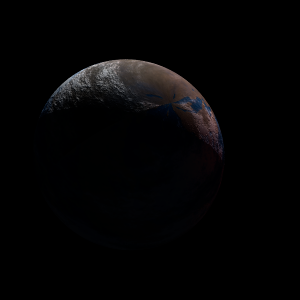|
|
Space Astro
|
Info for exoplanet "Oyagyu Tanu"
| Scientific (actual) data |
|---|
| Planet | Kepler-759 b |
| Planet status | Confirmed |
| Radius | 0.203 |
| Orbital period | 41.806 |
| Discovered | 2016 |
| Updated | 2021-02-05 |
| Tconj | 2454980 |
| Publication | Announced on a website |
| Detection type | Primary Transit |
| Alternate names | 2MASS J19203156+4122534 b, K01061.01, KIC 6037187 b, KOI-1061 b, KOI-1061.01, WISE J192031.57+412253.4 b |
| Star name | Kepler-759 |
| Right ascension | 290.13° |
| Declination | 41.38° |
| Mag j | 13.327 |
| Mag h | 13.009 |
| Mag k | 12.967 |
| Star distance | 892 |
| Star metallicity | 0.06 |
| Star mass | 1.04 |
| Star radius | 1.04 |
| Star age | 3.89 |
| Star temperature | 5860 |
| Star alternate names | 2MASS J19203156+4122534, KIC 6037187, KOI-1061, WISE J192031.57+412253.4 |
| Wikipedia article | Kepler-759 b |
Back
| |
| Fictional info (?) |
|---|
| Suggested name | Oyagyu Tanu |
| Planet type | Cold planet |
| Oyagyu Tanu is the largest and most crater filled planet in its solar system.
It is a cold planet planet with a mass one-thousandth that of Kepler-759, but two-and-a-half times that of all the other planets in its solar system combined. This cold planet is named after the deity Oyagyu Tanu, the bringer of prosperity.
When viewed from Earth, this proximity to Kepler-759 means the planet can only be seen near the western or eastern horizon during the early evening or early morning. The planet telescopically displays the complete range of phases, similar to Venus and the Moon, as it moves in its inner orbit relative to Kepler-759, which reoccurs over the so-called synodic period approximately every 75 days.
As seen relative to the fixed stars, it rotates on its axis exactly four times for every three revolutions it makes around Kepler-759. As seen from Kepler-759, in a frame of reference that rotates with the orbital motion, it appears to rotate only once every two years.
Two spacecraft have visited Oyagyu Tanu: Frontier 10 flew by 33 years ago; and Messenger, launched 19 years ago, orbited Oyagyu Tanu over 135 times in four years before exhausting its pwoer source and crashing into the planet's atmosphere 4 years later.
It may have had ammonia oceans in the past, but these would have vaporized as the temperature rose due to a runaway greenhouse effect.
Oyagyu Tanu is primarily composed of methane with a significant part of its mass being carbon dioxide, though carbon dioxide comprises only about a tiny fraction of the number of molecules. |
| Atmosphere | Methane | 78% |
| Carbon dioxide | 16% |
| Ammonia | 2.3% |
| Ammonium hydrosulfide (NH4SH) | 1.6% |
| Helium | 0.94% |
| Nitric oxide | 0.02% |
| Atmospheric pressure | 0.4 bar |
 |
| No known satellites |
| Google search for Oyagyu tanu |
|
Website by Joachim Michaelis
|
|
|
|